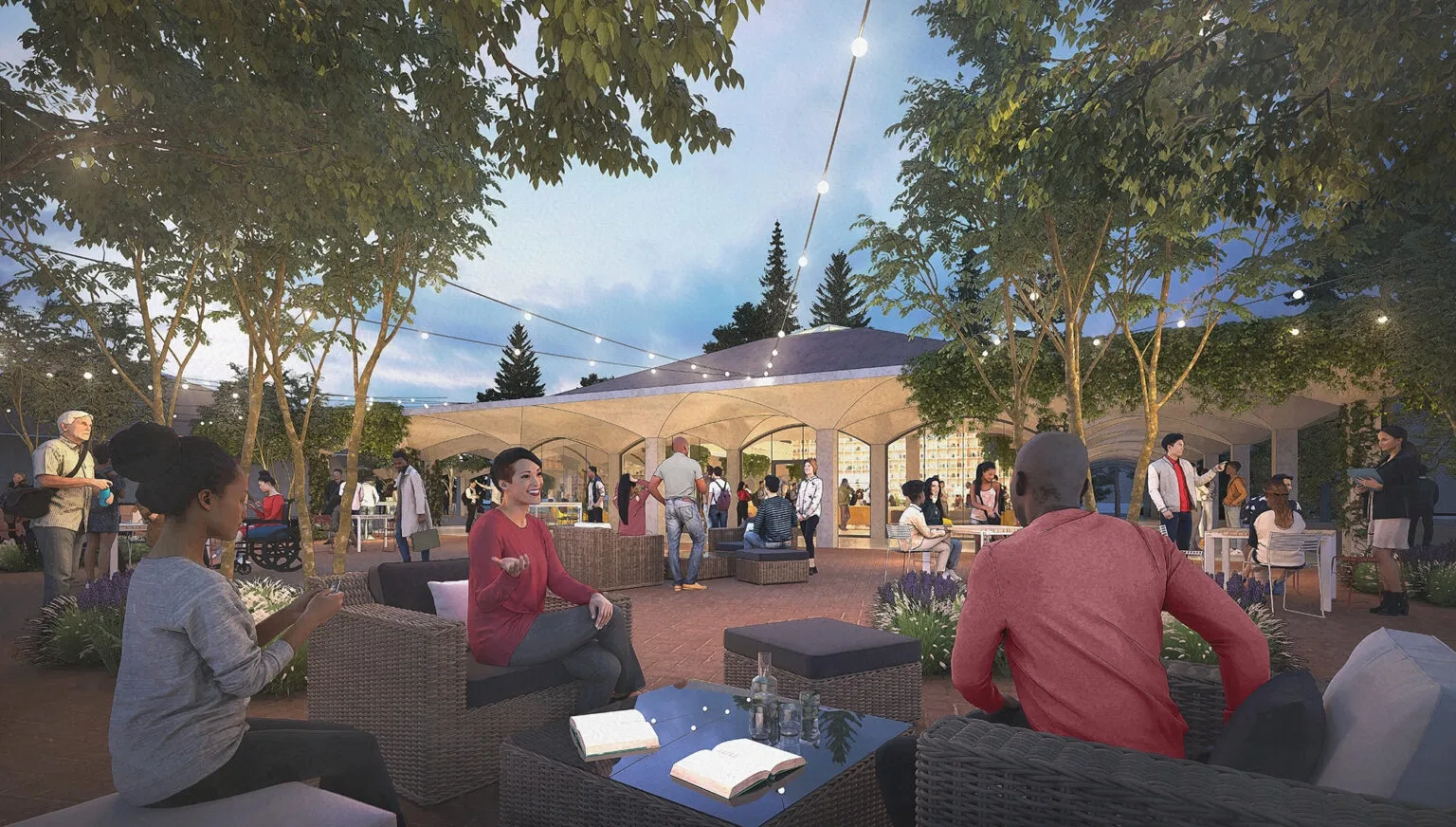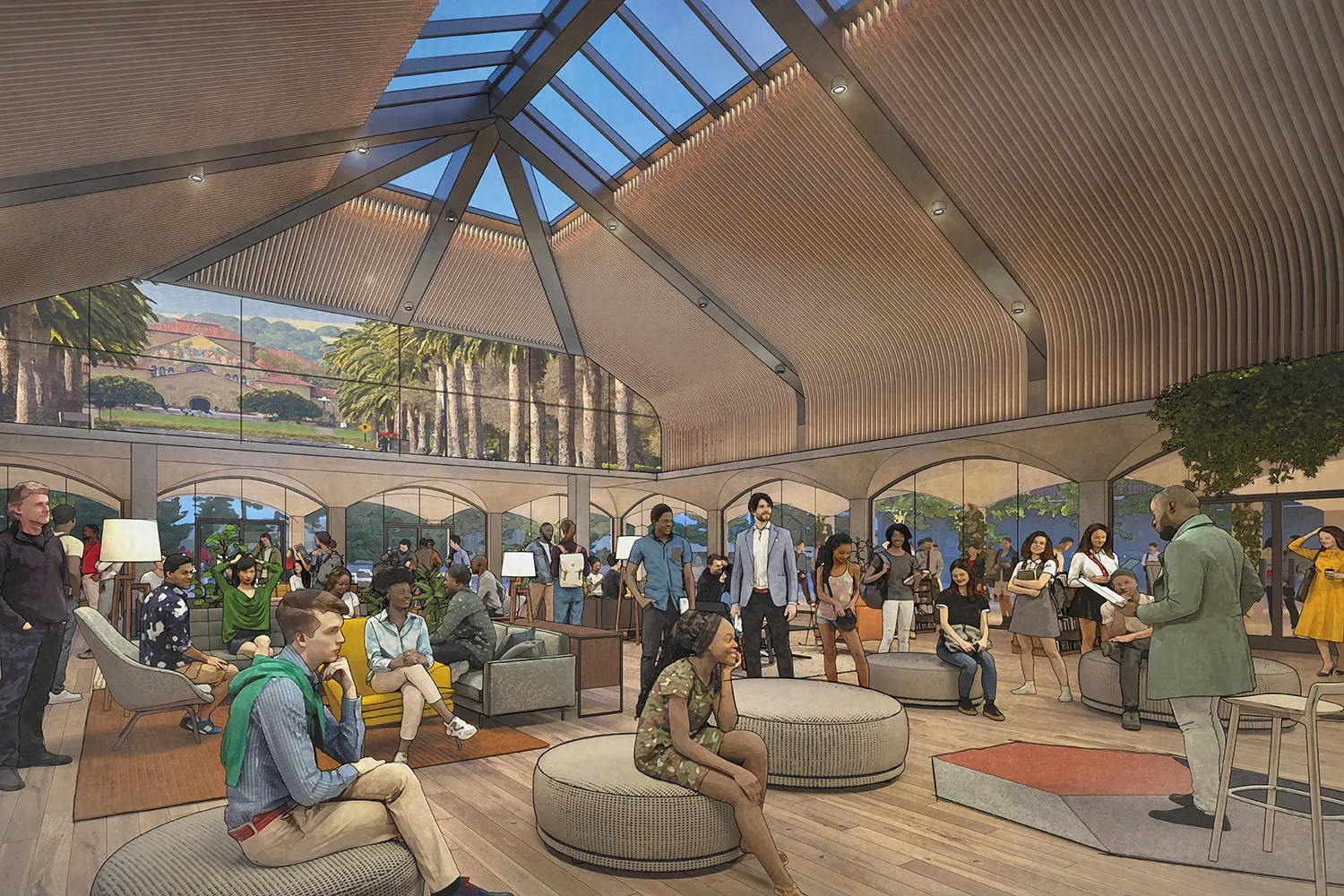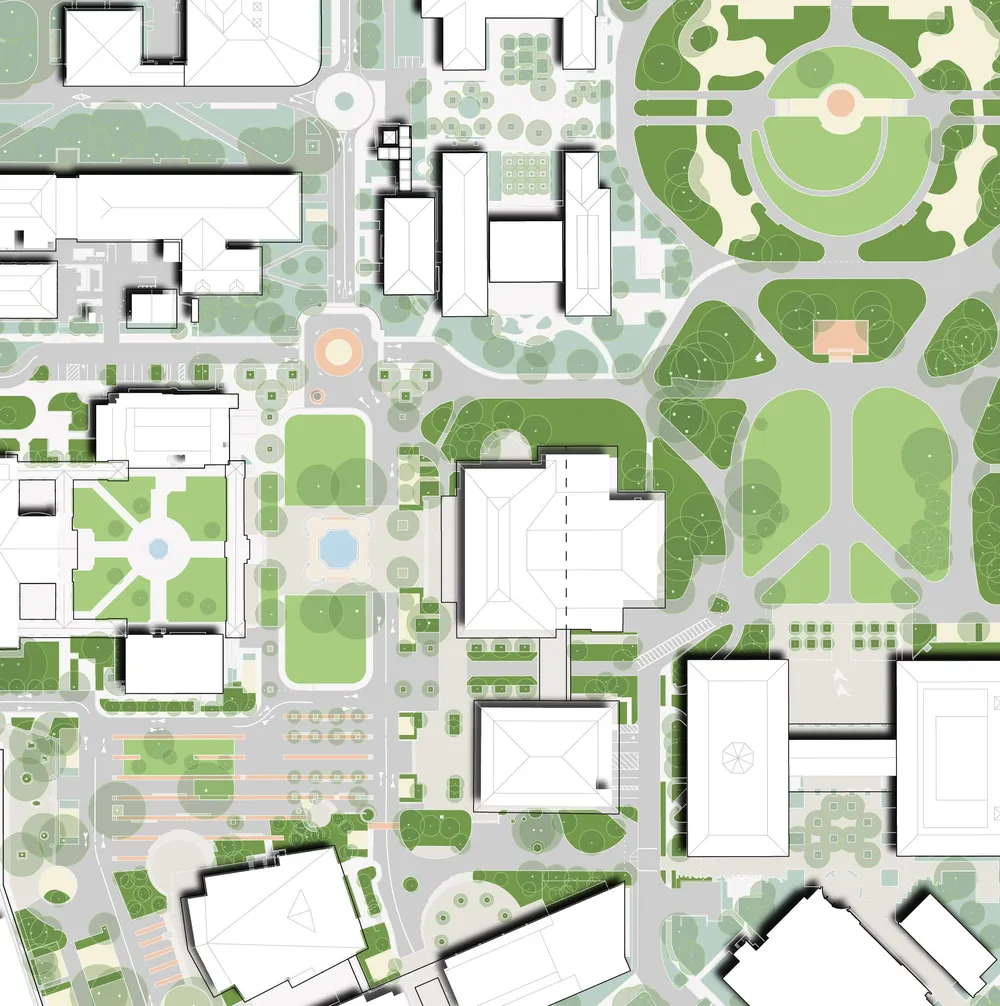
Town Center Project reimagines the heart of campus
Stanford is restarting the Town Center Project, following a pause for the pandemic, to reimagine the heart of campus with a renewed focus on discourse and community building. An anonymous donor is providing funding for its centerpiece.
Plans to reimagine and bring new energy to the center of campus as a hub of social and academic experiences for the Stanford community are resuming in 2024 – with preliminary site plans and new opportunities for input into how the spaces will look and be used.
The Town Center Project, which will build on an outreach and planning initiative that was paused during the pandemic, will cover the area roughly extending from Tresidder Memorial Union and White Memorial Plaza to Canfield Court and Meyer Green, including the bookstore and post office buildings, and provide spaces for large and small events and casual gatherings.
The multi-year project will be the latest step in the evolution of this central, heavily trafficked section of campus. Over time, alterations to structures and landscapes have addressed the changing needs of students and the broader university community, but the area has largely been unchanged since the 1980s.
Now, plans for a new future for the area – responding to community input, including the university’s Long-Range Vision process, and guided by a committee of student, faculty, and staff representatives – are once again taking shape.

Conceptual rendering of community event space. Photo: LMN Architects
A new Commons area
A Commons area will be the centerpiece of the project. An anonymous donor has provided a significant lead gift, which will be used for transforming the bookstore and post office buildings into open-air and enclosed areas where people can relax, meet up, study, and participate in a variety of planned and spontaneous events.
The gift will also provide ongoing funds for related activities to enhance the student experience and build community in and around the project’s new spaces, aligning with the donor’s commitment to social life on campus.
“I’m delighted to be moving forward with our plans to reimagine the heart of campus, with warm, inviting spaces where our community can come together to share ideas or just have fun,” said Stanford President Richard Saller. “We are grateful for the donor whose generosity will help make our aspirations a reality. This promises to be a vibrant area that will reflect Stanford’s unique ethos and the diversity of our campus community.”
The project will require reviews and approvals both by the university and Santa Clara County. Review of the concept and site design by the university’s Board of Trustees is targeted for fall 2024, followed by a request to the trustees for design approval in 2025. While planning continues, interim programming in the area will offer new uses and opportunities for interactions among community members.
‘New settings and new uses for familiar places’
This new campus center promises to be a hub for intellectual vitality, social engagement, and community building that will continue to support traditional uses, including White Plaza as a prominent place for public discourse and advocacy and a center for milestone activities such as New Student Orientation.
Programming and enhanced spaces will help foster a greater sense of community and provide opportunities for students, faculty, and staff to connect socially and intellectually. Reflecting community input, a key goal is to have this area serve myriad needs for years to come; for example, expanded food and event options will be designed with flexibility in order to adapt as uses and preferences change over time.
“The Stanford community has made this area of campus a popular, relaxed gathering spot for decades, but it’s time for something more,” said University Architect David Lenox. “The Town Center Project will reuse and revitalize these memorable spaces to create a distinctly Stanford place, both with new settings and new uses for familiar places. We want to create a welcoming, comfortable gathering spot, shaped by invaluable input from our community, for engagement, joy, and creative expression.”

The Town Center Project will cover the area roughly extending from Tresidder Memorial Union and White Memorial Plaza to Canfield Court and Meyer Green, including the bookstore and post office buildings. Photo: LMN Architects
Community voices in planning process
In 2019, Stanford began researching options and garnering input from students and from across the community for new ways to use the area. Robust community engagement included 15 formal focus group meetings, a campus-wide town hall meeting, and more than 50 informal and small-group conversations, as well as online input. Planners also consulted with outside experts and visited community spaces at other institutions.
The pandemic slowed those efforts and, as campus life resumed, prompted the university to take a fresh look at the extensive pre-pandemic planning in light of changes in routines, needs, and habits. Included in that effort:
Open houses, with opportunities to learn more and comment, are scheduled to begin Feb. 8-9. These sessions, along with coming online feedback tools, will give community members a further voice in plans for facilities, operations, and infrastructure.
While planning continues, pilot programming and other engagement activities will offer windows into what’s coming and inform adjustments.
The Town Center Advisory Committee, with membership from across the campus community, will continue to advise planners.
“Re-booting campus life after the pandemic was difficult for students and staff alike,” said Sophia Gabrielle Danielpour, Associated Students president and advisory committee member. “We’ve been working together to identify ways the university could better support student community and belonging, including new and more no-cost space for evening events, which is an important goal of the Town Center Project down the road but also for students today.”
Ongoing campus services
As the project moves forward, Old Union and Tresidder will continue to provide space for food, study, and socializing, and ensure the area still serves the campus community. Farmers markets and food tents, for example, will be a regular presence. Funding for university events and student groups will support new programs and ongoing activities that benefit students until new space is available.
Planners are exploring alternative ways to provide bookstore and post office services. The university has initiated a study to assess what is needed for a 21st-century bookstore – where and how best to offer faculty publications, textbooks, technology products, and university merchandise. Plans for the post office, which has rental mailboxes and counter services but does not handle mail distribution on campus, will be announced in 2025.
The project’s subsequent phases, which will complement the initial phase and reflect continuing feedback, will expand and enhance offerings at Old Union and Tresidder.
“At a time when we are all concerned about restoring community, it’s imperative to think about the role of space in fostering community. At the heart of all vibrant communities there has traditionally been a town center – variously called agora, forum, or piazza – where organized and impromptu interactions can occur,” said Professor Dan Edelstein, a faculty representative on the project advisory committee. “Stanford’s Town Center Project is exciting because it allows us to recreate this kind of variegated social space, allowing community members to interact, face-to-face, rather than behind screens.”